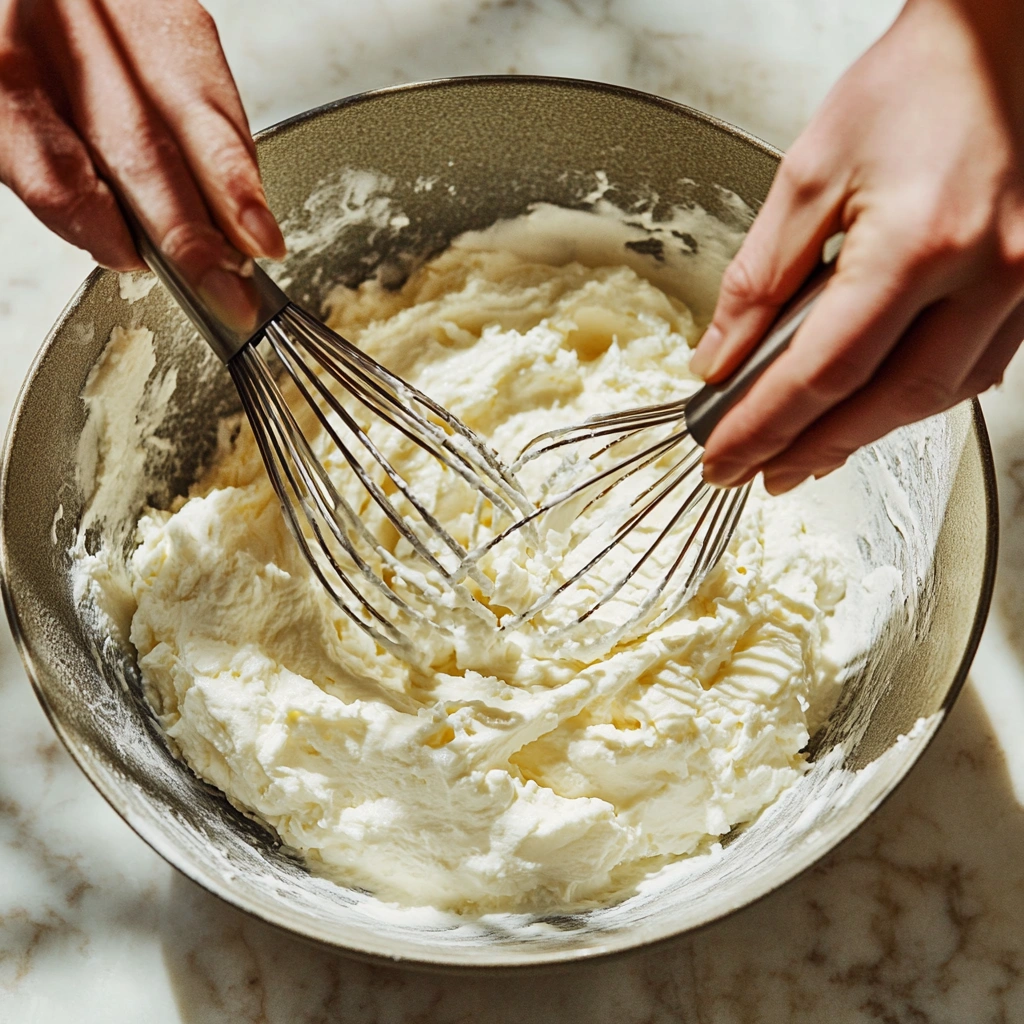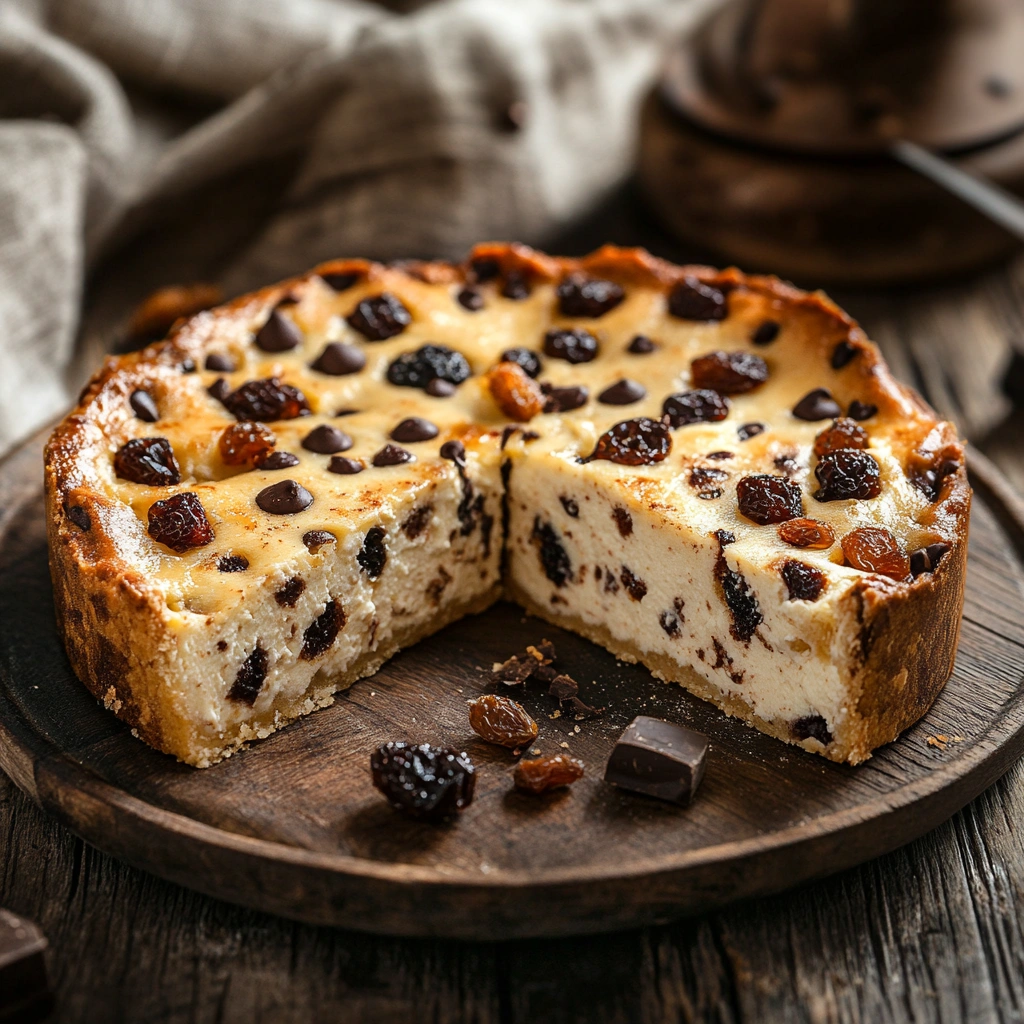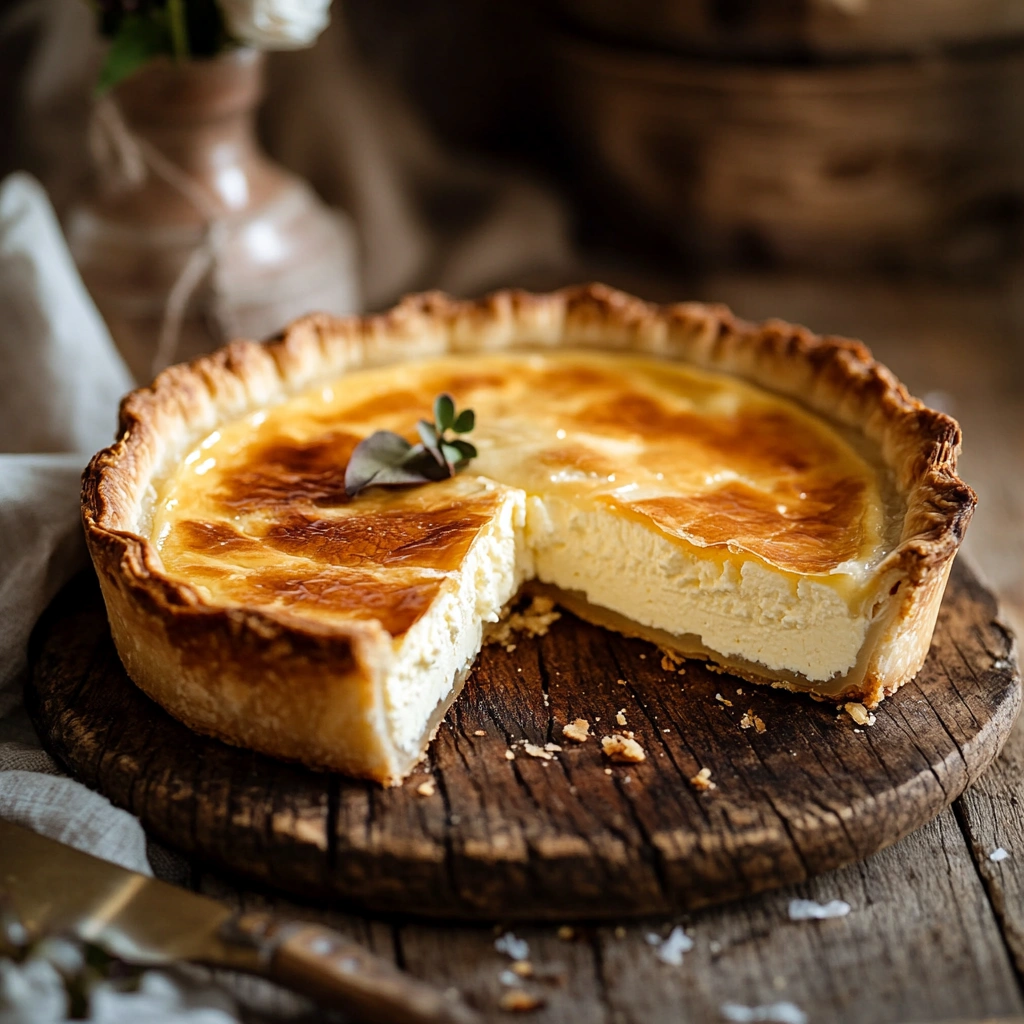If you’ve ever wondered how to create a dessert that feels both comforting and delightfully sophisticated, then you’re about to discover something truly special. Indeed, this ricotta cheese pie recipe offers a creamy, subtle sweetness and a nostalgic flavor that embodies old-world charm. Moreover, it draws from traditional Italian baking customs, so you’ll feel connected to a culinary heritage that’s both simple and elegant. In the following sections, we’ll not only dive into what makes this Italian ricotta dessert so memorable but also explore its deep cultural roots, ingredients, preparation methods, and even a few modern twists. Let’s begin!
Part 1: Introduction and Background
Ricotta Cheese Pie Recipe: A Classic Italian Dessert
A ricotta cheese pie recipe stands at the crossroads of rustic comfort and timeless indulgence. Although many sweets can taste cloying or overly rich, this particular treat focuses on mild sweetness and delicate, creamy textures. Furthermore, its soft filling and flaky crust provide a soothing contrast that often satisfies even the pickiest dessert lovers. And yet, this cherished dessert isn’t just about taste—it’s about tradition and the subtle elegance of Easter dessert recipe favorites passed down for generations. So, whether you’re an experienced home baker or an eager beginner, you’ll soon see how this pie can bring warmth and delight into your kitchen.
What Is Ricotta Cheese Pie?
At its core, ricotta cheese pie takes tender, creamy ricotta and transforms it into a delicate filling that’s gently sweetened, lightly scented with citrus zest, and enveloped by a pastry crust. Though it shares some similarities with cheesecake, it’s lighter and airier, which helps it stand out among other desserts. In fact, this creamy ricotta filling offers a comforting balance that can feel more nuanced than a denser, heavier cake. In short, it offers simplicity as well as sophistication—like taking a little trip to your grandmother’s kitchen in Italy, where ancient methods and heartfelt cooking produce something truly delightful.
The History and Tradition Behind Ricotta Cheese Pie
For generations, Italian families have treasured ricotta cheese pie as a symbol of comfort, togetherness, and celebration. Often associated with springtime festivities and holiday gatherings, many families continue to bake this pie as a beloved Easter dessert recipe. Centuries ago, when small rural communities in southern Italy produced fresh ricotta from local dairy farms, home cooks quickly learned that this smooth ingredient worked beautifully in sweets. Over time, its popularity spread, evolving as families passed their knowledge and love from one generation to the next. Today, these old-world customs remain vibrant, reminding us that food often weaves stories of heritage, love, and communal pride.
Key Ingredients You Need for the Perfect Ricotta Cheese Pie
The secret to a stellar ricotta cheese pie recipe lies in choosing the finest ingredients. Indeed, you’ll want top-quality ricotta for that mellow tang and creamy mouthfeel, plus fresh eggs that lend stability and richness. Adding a touch of sugar gives it gentle sweetness, while a whisper of citrus zest imparts brightness and balance. Some bakers fold in chocolate chips or lightly sweetened fruit for extra complexity. Above all, never underestimate the impact of a proper crust—whether you opt for a homemade pastry dough or a shortcut with a store-bought version, the key is to form a crisp, flaky shell that complements the smooth filling. And once you’ve assembled these elements, you’ll understand why this dessert continues to earn rave reviews: it’s pure simplicity that sings with subtle flavors.
Part 2: Step-by-Step Ricotta Cheese Pie Recipe
Essential Kitchen Tools and Equipment
Before you even consider mixing ingredients, ensure you have the right tools. Although it might sound trivial, proper equipment sets the tone for a smooth baking experience. For starters, a sturdy mixing bowl helps you combine your creamy ricotta with ease, while a well-balanced whisk aerates your whipped ricotta mixture, producing a luscious texture. Furthermore, a reliable spatula will aid in scraping down the sides, ensuring no sweet goodness goes to waste. In addition, a standard pie dish—ideally with slightly sloped sides—supports an even bake, resulting in that silky smooth texture you crave. Oh, and don’t forget a fine-mesh strainer to remove excess moisture from your ricotta; this subtle step prevents unwanted watery fillings. Lastly, a classic rolling pin (if you’re making homemade pastry dough) helps you flatten that crust into a thin, flaky canvas ready for your authentic ricotta pie filling. It’s worth investing in these essentials upfront, as you’ll return to them again and again.

Ricotta Cheese Pie Recipe: Ingredients List
The foundation of your Italian ricotta dessert relies on quality ingredients working in harmony. Start with fresh, high-grade ricotta—its subtle tang and delicate richness are vital. Then select large, free-range eggs, which strengthen the structure and contribute a velvety consistency. Add a modest amount of sugar for gentle sweetness, maintaining that mellow vibe without overwhelming the filling. A pinch of salt, although often overlooked, brightens flavors. Meanwhile, citrus zest—think lemon or orange—introduces a lively sparkle. If desired, fold in a handful of mini chocolate chips or chopped dried fruit, elevating your dessert into an indulgent dessert treat. Finally, for the crust, choose either a time-tested butter-based pastry or a pre-made option that simplifies the process. Ensuring each component is fresh and top-notch guarantees that your creation transforms into a dessert table centerpiece worth savoring.
Preparing the Crust
Begin by focusing on your crust’s character, because it forms the backbone of any ricotta cheese pie recipe. To achieve a flaky pastry crust that marries well with the creamy filling, work cold butter into your flour until pea-sized bits remain. Drizzle in just enough chilled water to bring the dough together. Then, gather it gently into a ball, flatten it into a disk, wrap it in plastic, and refrigerate for at least half an hour. During this rest, the gluten relaxes, creating a tender, crisp shell. Once chilled, roll the dough on a lightly floured surface, rotating often to maintain even thickness. Lay the dough into your pie dish, pressing it gently against the sides without stretching. Trim any excess, then crimp the edges for a decorative finish. Finally, consider blind-baking the crust—lining it with parchment and pie weights—so it remains crisp and never turns soggy. By putting extra care into this step, you ensure that each bite offers delightful contrast between the crisp outer layer and the creamy ricotta filling inside.
Making the Creamy Ricotta Filling
When it’s time to prepare the heart of this Mediterranean pastry tradition, begin by gently draining your ricotta through a fine-mesh strainer, removing excess moisture that could otherwise lead to a watery interior. Afterward, scoop it into a mixing bowl and whisk until it appears smooth and dreamy. Add sugar gradually, tasting as you go, to maintain that balanced sweetness. Mix in eggs one at a time, stirring thoroughly but not aggressively, since you don’t want to incorporate too much air. Once the mixture feels luxuriously thick, add a bright burst of citrus zest flavor. At this stage, if you’re feeling adventurous, fold in chocolate chips or tiny nuggets of dried fruit. Keep it simple or embrace complexity—your call. With each careful addition, the whipped ricotta mixture transforms into a delicately balanced filling. Indeed, the goal is not to overpower the natural creaminess, but rather to highlight it in subtle, tasteful ways.
Assembling and Baking the Ricotta Cheese Pie
Now comes the magical moment where all your efforts converge. Pour that pillowy, sweet ricotta mixture into the prepared crust, smoothing the top with a spatula. Before sliding your masterpiece into the oven, double-check the temperature and consider positioning it on the middle rack for even heat distribution. While it bakes, keep an eye on the edges—if they begin browning too quickly, loosely tent the pie with foil to shield it from overcooking. In just about an hour, you’ll notice the surface gently set, though it may still have a slight jiggle at the center. Remove it from the heat and place it on a cooling rack. Resist any temptation to cut in right away. Instead, let it rest, allowing residual warmth to gently finish setting the structure. After it cools to room temperature, you can refrigerate it, giving the flavors time to bloom and the texture to firm into that silky smooth texture you’ve been dreaming of. In the end, when you slice into it, a harmonious balance of crisp crust, creamy interior, and subtle sweetness greets your senses.
Troubleshooting Common Issues
Even experienced bakers occasionally face hiccups, but don’t worry—most can be easily corrected. If your pie turns out runny, you may have skipped properly draining the ricotta, so next time be sure to remove excess moisture. Should you find the texture gritty or grainy, consider whisking the mixture more thoroughly, or check the freshness of your dairy. If your crust feels tough instead of flaky, you might have overworked the dough or added too much water. A soggy bottom suggests you didn’t blind-bake long enough, or perhaps your oven temperature ran low. And if the top cracks, rest assured it’s likely a cosmetic issue. Next time, bake it slightly shorter or let it cool more slowly. Remember, every baker encounters challenges, but these small lessons guide you toward mastering this traditional Italian baking art form. With persistence, you’ll soon develop an intuitive feel for balancing flavors, textures, and baking times, ensuring that your ricotta cheese dessert turns out splendidly time after time.
Part 3: Variations, Substitutions, and Dietary Considerations
Flavor Variations to Enhance Your Ricotta Cheese Pie Recipe
Although the classic version charms with its delicate simplicity, consider broadening its character by mixing in small chocolate chips or finely chopped nuts. Alternatively, gently folded dried cherries or figs deliver a sweet, subtle tang. For bolder twists, try adding a touch of cinnamon or a whisper of almond extract. Each accent turns your Italian ricotta dessert into something personalized and surprising.
Healthier and Dietary-Friendly Options
If you’re seeking lighter alternatives, experiment with low-sugar or natural sweeteners, ensuring you don’t overpower its creamy ricotta filling. Consider using a whole-grain crust that adds both nuttiness and fiber. For those with dietary restrictions, gluten-free pastry shells or reduced-fat ricotta can work wonders. Although these adjustments slightly shift the flavor, they still preserve that comforting core essence.

Substitutes for Ricotta Cheese
If ricotta proves elusive, mascarpone or a well-drained cottage cheese can stand in. Cream cheese also works—just temper its tang with gentle seasoning. Though substitutions alter the final texture, they still yield a traditional Italian baking delight with a familiar creamy finish.
Seasonal Twists and Regional Variations
Adjust the filling with citrus zest flavor based on what’s in season. In warmer months, try dried apricots or figs, while cooler times invite spices or a subtle hint of honey. Regional choices range from simple rustic versions to more ornate interpretations brimming with color and texture. Each variant tells a new story at your table.
Part 4: Serving Suggestions, Storage, and Pairings
How to Serve Ricotta Cheese Pie
Serve it chilled or at room temperature, decorated with a dusting of powdered sugar or a dollop of fresh fruit puree. Its gentle sweetness pairs beautifully with coffee or tea. Offering it as a highlight on your dessert table brings undeniable charm.
Storing Your Ricotta Cheese Pie Recipe
To keep it fresh, refrigerate any leftover slices in an airtight container. This dessert table centerpiece can last several days, maintaining its silky smooth texture. For longer storage, wrap individual portions and freeze them.
Perfect Beverage Pairings
Simply enjoy this authentic ricotta pie with tea or a cozy cup of espresso. A warm beverage complements its creamy subtlety, enhancing the comforting experience.
FAQs
Can I use cream cheese instead of ricotta in a ricotta cheese pie recipe?
Yes, but it changes the overall texture. Cream cheese is denser and tangier, so whisk it well and consider reducing the sugar slightly. While not identical, it still produces a smooth, creamy dessert inspired by traditional Italian baking.
How do I keep my ricotta cheese pie from becoming too runny?
Drain your ricotta before mixing, allowing any excess moisture to escape. Also, ensure you measure ingredients precisely and follow recommended baking times. These steps help you achieve that silky smooth texture without unwanted liquid pooling.
Should I bake the crust before adding the ricotta filling?
Blind-baking your crust helps it remain crisp and flaky. A quick pre-bake sets the pastry, preventing sogginess and enhancing the pie’s overall structure. This extra step makes a world of difference in your Italian ricotta dessert.
What’s the difference between ricotta pie and cheesecake?
Though both feature creamy fillings, cheesecake often relies on cream cheese, resulting in a denser texture. Ricotta cheese pie recipes use lighter ricotta and offer subtler sweetness. In short, ricotta pies feel more delicate and airy, while cheesecakes lean heavier and richer.
How long does ricotta cheese pie last in the refrigerator?
Store it in an airtight container, and it should remain fresh for around three to four days. Over time, the flavors mingle, and the creamy ricotta filling retains its gentle sweetness. Keep it chilled to maintain structure and flavor.
Is it best to serve ricotta cheese pie warm or cold?
Both approaches are delicious, but most prefer it slightly chilled or at room temperature. This way, the subtle flavors shine through, and the texture remains pleasantly firm without feeling stiff.
Can I freeze leftover ricotta cheese pie?
Yes. Wrap individual slices tightly to protect flavor and texture, then thaw gently in the fridge before serving. While the consistency might shift slightly, the essence of this indulgent dessert treat remains intact.
Conclusion
In essence, creating a memorable ricotta cheese pie recipe involves combining excellent ingredients, care, and a willingness to experiment. With each subtle improvement—whether choosing top-quality ricotta, draining it thoroughly, or infusing new flavors—you elevate its delicate character. As you explore variations, refine techniques, and perhaps embrace a few personal twists, you’ll uncover a beloved dessert that resonates with history, simplicity, and heartfelt charm. With patience and practice, you’ll master a timeless confection that not only connects you with traditional Italian baking but also delights family and friends at any gathering.

